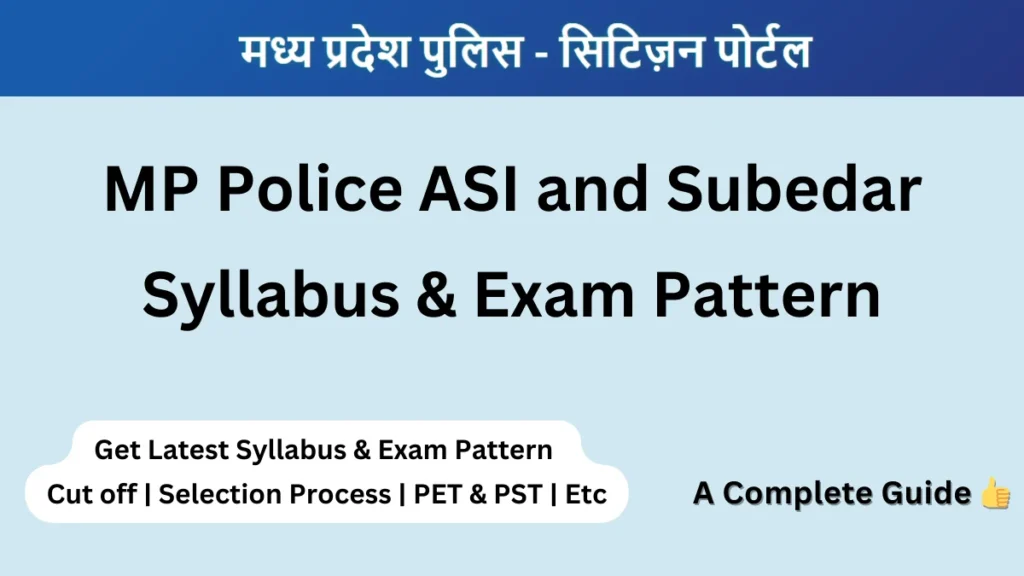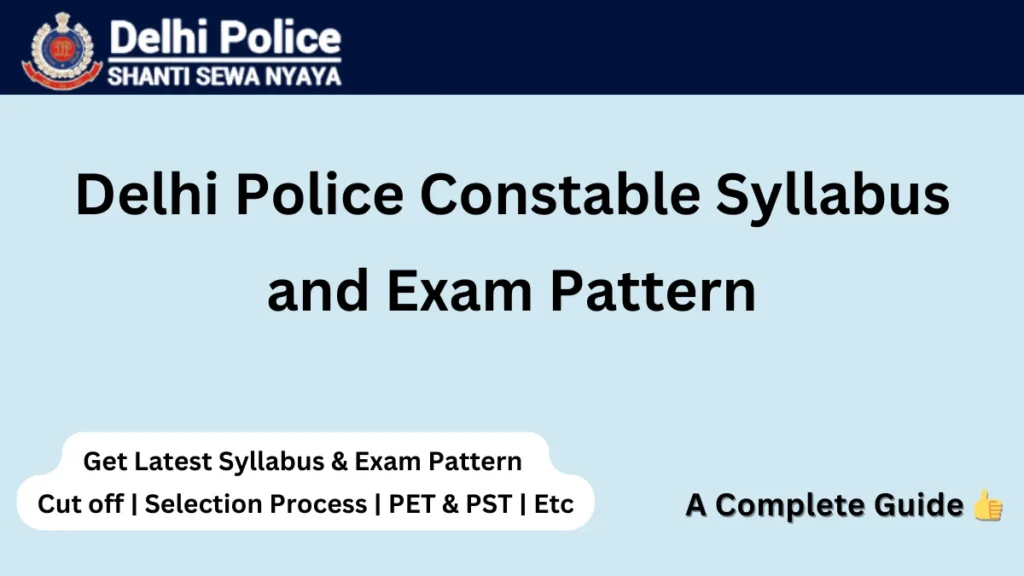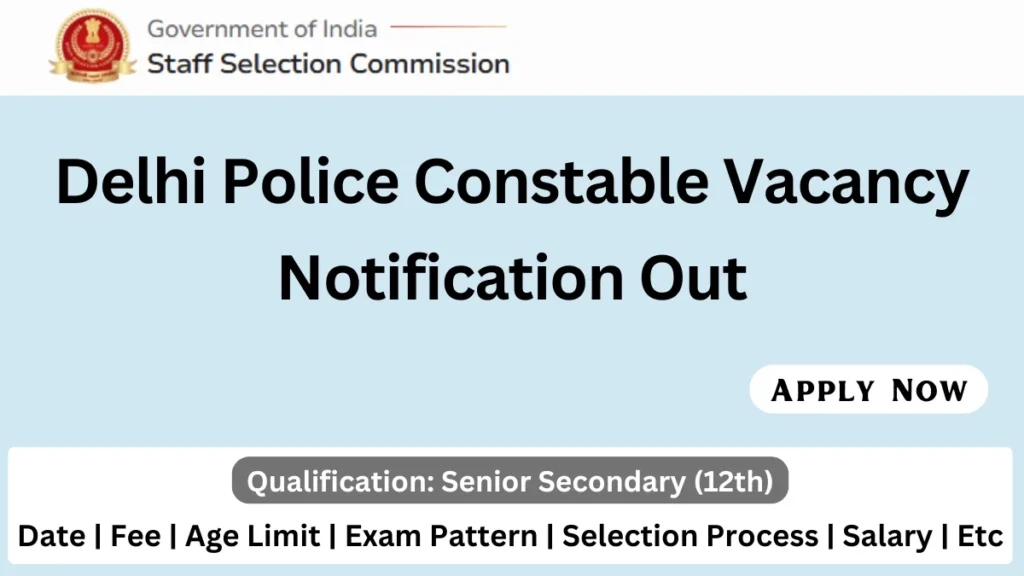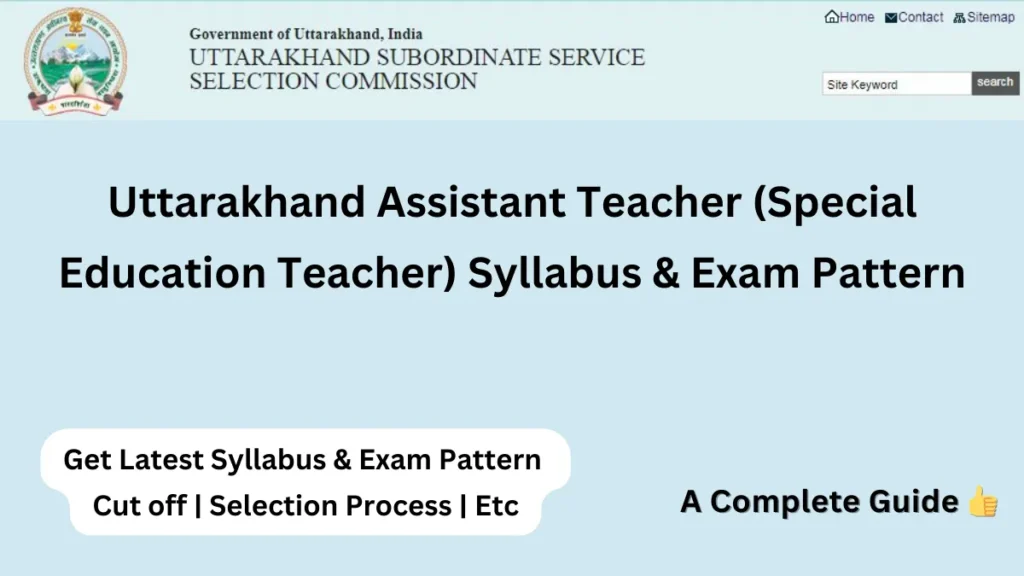If you are preparing for SSC CGL 2025, understanding the syllabus is the first step towards success. Knowing the topics covered in the exam will help you plan your preparation effectively.
This article provides a comprehensive guide to the SSC CGL syllabus, exam pattern, and important topics for all tiers. Read on to get complete details and prepare strategically.

Table of Contents
SSC CGL Exam Pattern 2025
The SSC CGL (Staff Selection Commission Combined Graduate Level) Exam is conducted in four stages (tiers). Each tier has a different mode and pattern. The table below summarizes the exam pattern:
| Tier | Mode | Subjects Covered |
|---|---|---|
| Tier I | Online (CBT) | General Intelligence, General Awareness, Quantitative Aptitude, English |
| Tier II | Online (CBT) | Mathematical Abilities, Logical Reasoning, English, General Awareness, Computer Knowledge |
| Tier III | Offline (Descriptive) | Essay, Letter Writing, Precis Writing |
| Tier IV | Skill Test | Computer Proficiency Test, Data Entry Test |
Now, let’s explore the syllabus tier-wise in detail.
SSC CGL Tier 1 Exam Pattern & Syllabus 2025
Exam Pattern
The Tier 1 exam consists of four sections with equal weightage:
| Subject | No. of Questions | Marks |
|---|---|---|
| General Intelligence & Reasoning | 25 | 50 |
| General Awareness | 25 | 50 |
| Quantitative Aptitude | 25 | 50 |
| English Comprehension | 25 | 50 |
| Total | 100 | 200 |
Key Points:
- Exam mode: Online (CBT)
- Each question carries 2 marks.
- Duration: 60 minutes (1 hour)
- Negative marking: 0.50 marks per wrong answer
SSC CGL Tier 1 Syllabus
- General Intelligence & Reasoning
- Coding-Decoding
- Blood Relation
- Direction & Distance
- Ranking & Order
- Venn Diagram
- Syllogism
- Seating Arrangement
- Number & Alphabet Series
- General Awareness
- Indian History & Freedom Struggle
- Indian Constitution & Political System
- Geography (India & World)
- Economy & Budget
- Science (Physics, Chemistry, Biology)
- Sports & Awards
- Important Government Schemes
- Current Affairs (Last 6-12 months)
- Quantitative Aptitude
- Percentage
- Ratio & Proportion
- Profit & Loss
- Average
- Time & Work
- Time, Speed & Distance
- Simple & Compound Interest
- Number System
- Data Interpretation (Bar Graph, Pie Chart, Table)
- English Comprehension
- Synonyms & Antonyms
- Fill in the Blanks
- Idioms & Phrases
- Error Spotting
- Sentence Rearrangement
- Cloze Test
- Reading Comprehension
Preparation Tips for SSC CGL Tier 1
- ✅ Understand the syllabus and prioritize important topics.
- ✅ Take mock tests daily and focus on time management.
- ✅ Stay updated with current affairs.
- ✅ Regularly practice reasoning and quantitative aptitude.
- ✅ Improve English by reading newspapers and learning new words.
read more: How to Prepare for SSC Exam? Best Tips and Strategy for SSC Exam 2025
SSC CGL Tier 2 Exam Pattern & Syllabus 2025
Exam Pattern
The Tier 2 exam consists of three papers:
| Paper | Subject | No. of Questions | Marks | Duration |
|---|---|---|---|---|
| Paper 1 | Math, Reasoning, English, General Awareness, Computer Knowledge, DEST | 150 | 450 | 2 hours 30 minutes |
| Paper 2 | Statistics (For JSO post only) | 100 | 200 | 2 hours |
| Paper 3 | Finance & Economics (For AAO post only) | 100 | 200 | 2 hours |
Key Points:
- Paper 1 is mandatory for all candidates.
- Paper 2 is required for the Junior Statistical Officer (JSO).
- Paper 3 is required for Assistant Audit Officer (AAO) and Assistant Accounts Officer (AAO).
- Negative marking: 1 mark for each wrong answer in most sections (0.50 in Mathematical Abilities & Reasoning).
- Data Entry Speed Test (DEST) is a qualifying test in Paper 1.
SSC CGL Tier 2 Syllabus
Paper 1 (Compulsory for All Candidates)
- Mathematical Abilities
- Number System
- Simplification
- Profit & Loss
- Percentage
- Ratio & Proportion
- Time & Distance
- Time & Work
- Mensuration
- Algebra
- Trigonometry
- Data Interpretation
- Reasoning & General Intelligence
- Coding-Decoding
- Blood Relations
- Venn Diagram
- Seating Arrangement
- Syllogism
- Clock & Calendar
- English Language & Comprehension
- Synonyms & Antonyms
- One Word Substitution
- Error Spotting
- Cloze Test
- Para Jumbles
- Reading Comprehension
- General Awareness
- History
- Indian Polity
- Geography
- Economy
- General Science
- Current Affairs
- Computer Knowledge
- Basics of Computer
- Operating Systems
- Internet & MS Office
Paper 2 (Statistics – Only for JSO Post)
- Measures of Central Tendency
- Probability Theory
- Time Series Analysis
- Sampling Theory
Paper 3 (Finance & Economics – Only for AAO Post)
- Basic Concepts of Economics
- Financial Accounting
- Indian Economy
- Fiscal Policy & Budget
Preparation Tips for SSC CGL Tier 2
✅ Know the Exam Pattern & Syllabus – Focus on Math, Reasoning, English, General Awareness, Computer, Statistics (JSO), Finance & Economics (AAO).
✅ Strengthen Basics – Revise fundamental concepts, solve previous papers, and make short notes.
✅ Time Management – Prioritize high-scoring topics and improve calculation speed.
✅ Daily Mock Tests & Analysis – Track progress, fix weak areas, and improve accuracy.
✅ Improve English & GK – Read newspapers, practice comprehension, and stay updated with current affairs.
✅ Focus on Important Topics –
- Math: Algebra, Trigonometry, DI, Profit & Loss
- Reasoning: Puzzles, Coding-Decoding, Blood Relations
- English: Grammar, Vocabulary, Comprehension
- General Awareness: Current Affairs, History, Economy
Stay consistent, practice daily, and stay confident! 🚀
SSC CGL Tier 3 & 4 Exam Pattern & Syllabus 2025
The SSC CGL Tier 3 and Tier 4 exams are crucial for candidates as they assess writing skills and technical proficiency. These tiers play a vital role in the final selection process. Let’s understand their exam pattern and syllabus in detail.
SSC CGL Tier 3 (Descriptive Paper)
- Mode: Offline (Pen & Paper-based exam)
- Type: Essay Writing, Letter Writing, Precis Writing
- Total Marks: 100
- Duration: 1 Hour
The Tier 3 exam is designed to evaluate a candidate’s writing skills in English or Hindi. The ability to structure thoughts clearly and express them effectively is tested in this paper. The topics are usually related to current affairs, government schemes, economic issues, or social problems.
✅ Essay Writing: Topics may include national and international issues, policies, economy, or technology.
✅ Letter Writing: Candidates may be asked to draft formal or informal letters based on given scenarios.
✅ Precis Writing: Summarizing a given passage concisely and effectively.
This paper plays a crucial role for candidates aiming for government administrative positions, as strong communication skills are essential for such roles.
SSC CGL Tier 4 (Skill Test)
The Tier 4 exam is a qualifying stage and includes two skill-based tests:
1. Computer Proficiency Test (CPT)
Applicable for posts such as Assistant Section Officer (ASO) in CSS, MEA, and AFHQ. This test includes:
- Word Processing (Typing Test) – Candidates must type 2000 words in 15 minutes.
- Spreadsheet (Excel Test) – Basics of MS Excel like data entry, formulas, and table creation.
- Slide Generation (PowerPoint Test) – Creating presentations using MS PowerPoint.
2. Data Entry Speed Test (DEST)
This test is conducted for all candidates and is mandatory for the position of Tax Assistant (CBDT & CBIC).
- Typing Speed Requirement: 8000 key depressions per hour.
- Candidates must type a given paragraph in 15 minutes.
Key Points to Remember:
✅ Tier 4 is only qualifying in nature.
✅ The marks obtained in Tier 4 are not added to the final merit list.
✅ Candidates must clear CPT/DEST to be eligible for final selection.
SSC CGL Selection Process 2025
- Candidates must qualify in all tiers to get selected.
- The final merit list is prepared based on Tier 1, Tier 2 & Tier 3 scores.
- Tier 4 is qualifying in nature.
read more: SSC OTR Registration 2025: Easy Guide for Candidates
SSC CGL Syllabus 2025 FAQs
here are some frequently asked questions (FAQs) related to SSC CGL Syllabus 2025.
What is the mode of SSC CGL Tier 1 & Tier 2 exams?
Both Tier 1 and Tier 2 exams are conducted in online Computer-Based Test (CBT) mode.
Is there negative marking in SSC CGL?
Yes, there is a negative marking of 0.50 marks in Tier 1 and 1 mark for most sections in Tier 2.
What is the difficulty level of SSC CGL?
The exam is of moderate to high difficulty level, requiring strong preparation in all subjects.
How many attempts are allowed for SSC CGL?
There is no limit on attempts, but candidates must meet the age criteria.
Is Tier 4 compulsory for all candidates?
yes, Tier 4 is mandatory but is qualifying in nature.
What are SSC CGL subjects?
The SSC CGL exam includes subjects like General Intelligence, General Awareness, Quantitative Aptitude, English, Mathematics, Reasoning, Computer Knowledge, and Statistics (for JSO).
Is SSC CGL tougher than SBI PO?
Both exams have their challenges, but SSC CGL is more focused on reasoning and general awareness, while SBI PO includes banking-specific topics.
Is SSC CGL very hard to crack?
With proper preparation, SSC CGL can be cracked. The difficulty level is moderate to high, depending on your preparation.
Can I crack CGL in 30 days?
Cracking CGL in 30 days is tough but possible with intense preparation and strategy.
Why is SSC CGL called Mini IAS?
SSC CGL is called Mini IAS because it offers prestigious posts with administrative responsibilities similar to IAS.
What is SSC CGL salary?
The salary varies from ₹25,500 to ₹1,51,100 depending on the post and department.
What is CGL full form?
CGL stands for Combined Graduate Level.
Conclusion: How to Succeed in SSC CGL 2025?
To crack SSC CGL 2025, follow these strategies: ✅ Make a study plan covering all subjects. ✅ Practice previous year papers and mock tests. ✅ Focus on time management and accuracy. ✅ Improve weak areas and stay consistent with revision.
By following this detailed syllabus and structured preparation, you can confidently clear SSC CGL. Best of luck!




